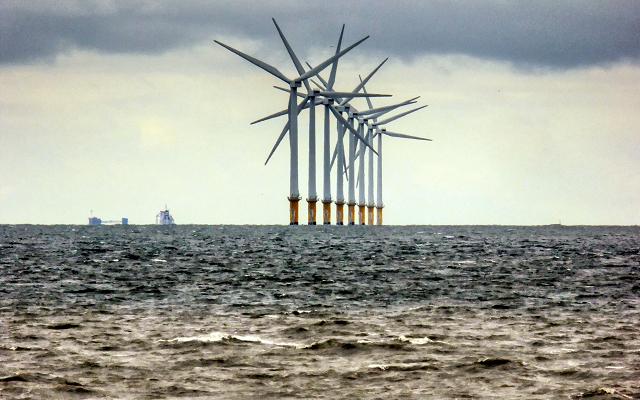The Energy White Paper

Head of Energy and Sustainability Will McMyn analyses the long-awaited Energy White Paper, published this week.
Over two years since it was first announced, the Energy White Paper was finally published on 14 December.
The reaction from most industry commentators has been positive: here it seems, at last, is a credible, coherent and comprehensive plan for modernising our energy system and making it fit for a net zero future.
Two major announcements in the paper have made headlines in the national press. Firstly, government will work up plans for a new, large-scale nuclear project so that a final yes/no decision can be made before the next general election.
Secondly, the UK will put in place a new UK Emissions Trading Scheme (ETS) to replace the European ETS which we will leave at the end of the transition period (the scheme puts a steadily falling cap on the carbon emissions that heavy industrial plants can emit and allows them to buy and sell emissions allowances).
Beyond these headline announcements, the White Paper is occasionally guilty of the old trick of clouding whether announcements are genuinely new, or merely a reframing of existing commitments - but there are plenty of points of interest tucked away in the 170-page document.
Nuclear
The announcement that government will enter discussions with EDF on its Sizewell C project in Suffolk will be a huge relief to the British nuclear industry. The sector has been at something of a crossroads of late, with an aging fleet of nuclear stations; investors walking away from projects that they were unable to make stack up economically; concerns about foreign involvement in the UK’s critical national infrastructure; and questions about the future role of large-scale nuclear power in the face of major advances by renewables and other technologies.
The government has now confirmed that, following consultation last year, it still views its proposed Regulated Asset Base (RAB) model as a “credible” way to finance nuclear projects. Proponents of the RAB say it will help secure the private finance needed to build nuclear projects, while opponents say it will let developers off the hook for busting their budgets, dumping that financial risk onto billpayers.
ETS
The second headline-grabbing announcement, about the ETS, came just 18 days before the end of the Brexit transition period and finally clarifies the situation for heavy industrial plants currently covered by the EU-wide version of the scheme. Before this announcement, there had been some suggestion that the ETS would be scrapped in favour of a new carbon tax. Instead, just as its European predecessor has done, the UK ETS will involve about 1,000 energy-intensive UK facilities in sectors like steel, glass and cement manufacturing which are collectively responsible for about a third of our greenhouse gas emissions.
Energy consumers
A fair chunk of the White Paper was dedicated to the retail energy market and the document set out some interesting ideas to boost competition via “opt-in collective switches”, which have been shown in trials to engage and motivate customers that have not thought about switching their energy tariff for many years. There is also the prospect of government putting an end to the standard practice of rolling customers onto expensive default tariffs when their contract period ends.
Amid the massive rise in tariffs marketed as “100% renewable” - and questions about how legitimate these claims sometimes are - government will consult in 2021 on how to ensure that customers receive transparent and trustworthy information when making purchasing decisions.
Renewables
On renewables, the headline was the government’s existing commitment to quadruple the UK’s already world-leading offshore wind capacity by 2030. There was also, however, explicit recognition that “onshore wind and solar will be key building blocks of the future generation mix…” and that “we will need sustained growth in the capacity of these sectors in the next decade”.
So, alongside the White Paper, the government has launched a call for evidence to understand industry views on the financing and deployment of renewables. This will help government to ensure the right policy framework to support accelerated deployment, including future evolution of the contracts for difference scheme which has been so pivotal to the growth of UK renewables.
A new “Ministerial Delivery Group” will oversee the expansion of renewable power, confronting longstanding challenges such as wind turbine interference with military and civil radar, local environmental impact of renewable schemes, and the many barriers faced by renewables developers in securing grid connections for their projects. The Group will also work to speed up the consenting process and overhaul planning guidelines and environmental regulations.
Innovative technologies
The White Paper seems to place a fair amount of faith in the ability of nascent technologies – at varying levels of readiness - to get us to net zero, whether carbon capture and storage, direct air capture, hydrogen for heat and transport, small and advanced modular reactors, or even the ever-elusive nuclear fusion.
With the shrinking window of opportunity to meet net zero, there will probably come a moment when it makes more sense to double-down on existing, proven solutions, rather than to continue to chase potentially helpful, but highly uncertain future technologies. I expect the public debate on whether we have already met – or when we will meet - that inflection point to heat up over the coming year or two.
Governance and regulation
The final key area of the White Paper that I’ll touch on is governance and regulation – not sexy, perhaps, but very important. The government recognises that, as so often, regulation is not keeping pace with technological or commercial development. So, in the retail market, the White Paper commits to overhaul the arrangements to ensure they account for innovations such as tariffs with real-time, dynamic pricing – or peer to peer energy trading. There is also an intention to extend the regulatory scope to include energy brokers and price comparison websites.
At a wholesale and systems level, the White Paper recognises that the current governance – the agreed roles and responsibilities of the various stakeholders, the technical standards and commercial rules - still largely reflects the model of thirty years ago, when the energy system was very much simpler and more centralised. Bringing these governance arrangements up to date - making them fit for the energy system we have today and will have in the future – will be critical to achieving net zero.
My view is that, if anything, the White Paper has put into sharper focus the enormity of the challenge ahead, but it has filled quite a deep and longstanding void in UK energy policy, answering some important questions and setting a clearer path ahead.









